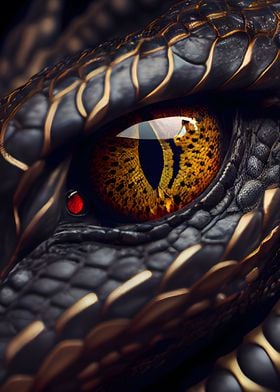Snakes are fascinating creatures, renowned for their diverse adaptations and unique characteristics. One remarkable feature found in some snake species is large, striking eyes that seem almost out of place on their slender faces. These big eyes serve various purposes, from improved night vision to hunting prowess. In this article, we will explore the world’s top five snakes with big eyes, shedding light on these enigmatic reptiles and their remarkable body-to-eye ratio.
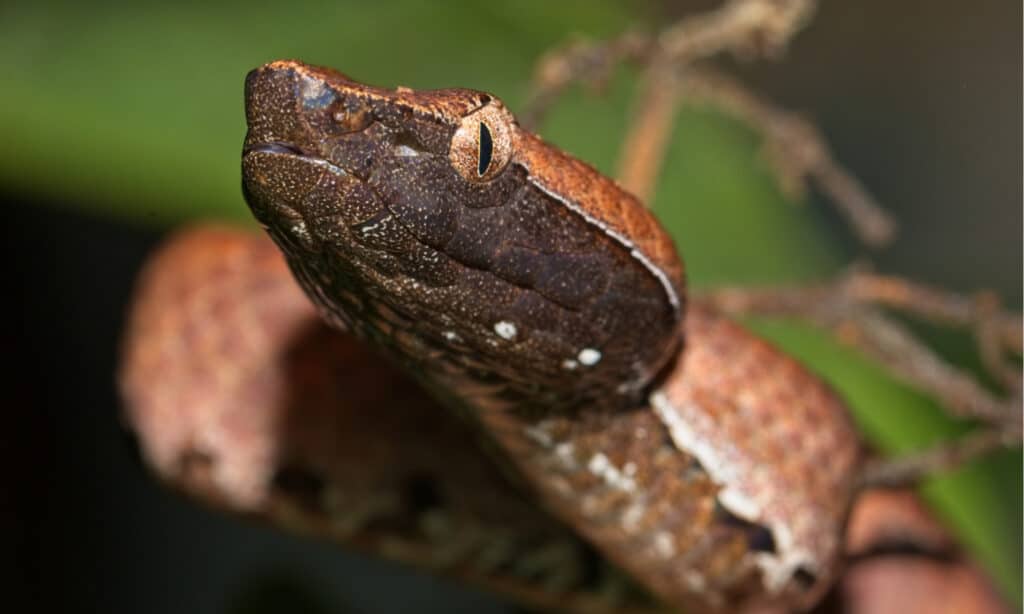
1. Bushmaster (Lachesis spp.)
The Bushmaster is a formidable snake with a robust body covered in striking scales, often exhibiting a mottled pattern of browns, blacks, and creams. They are known for their incredibly potent venom, which is delivered through large fangs.
Eye Size: The Bushmaster, belonging to the genus Lachesis, boasts some of the largest eyes among snakes, measuring about 1.5 centimeters in diameter.
Natural Habitat: These magnificent snakes are primarily found in the dense rainforests and tropical woodlands of Central and South America.
Geographic Range: Bushmasters are distributed across a wide range, from southern Mexico to northern South America.
Appetite: Bushmasters are carnivorous and primarily feed on small mammals and birds. Their potent venom immobilizes prey quickly.
Natural Predators: While adults have few natural predators, young bushmasters may fall victim to large birds of prey and certain mammalian predators.
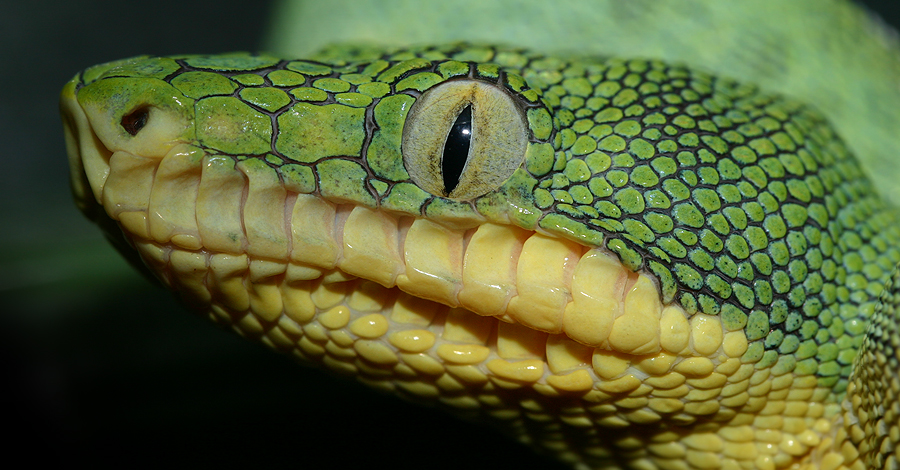
2. Emerald Tree Boa (Corallus caninus)
The Emerald Tree Boa is a visually stunning snake with vibrant green scales adorned with white markings. Its large eyes, with vertical pupils, give it an inquisitive and captivating appearance.
Eye Size: The Emerald Tree Boa possesses relatively large eyes for its size, with an average diameter of about 1 centimeter.
Natural Habitat: These snakes are arboreal and inhabit the lush canopy of South American rainforests.
Geographic Range: They are mainly found in regions of northern South America, including Venezuela, Suriname, and Guyana.
Appetite: Emerald Tree Boas are constrictors that primarily prey on small mammals, birds, and sometimes even other reptiles.
Natural Predators: While adults have limited natural predators, their eggs and young snakes can fall prey to various tree-dwelling birds and mammals.
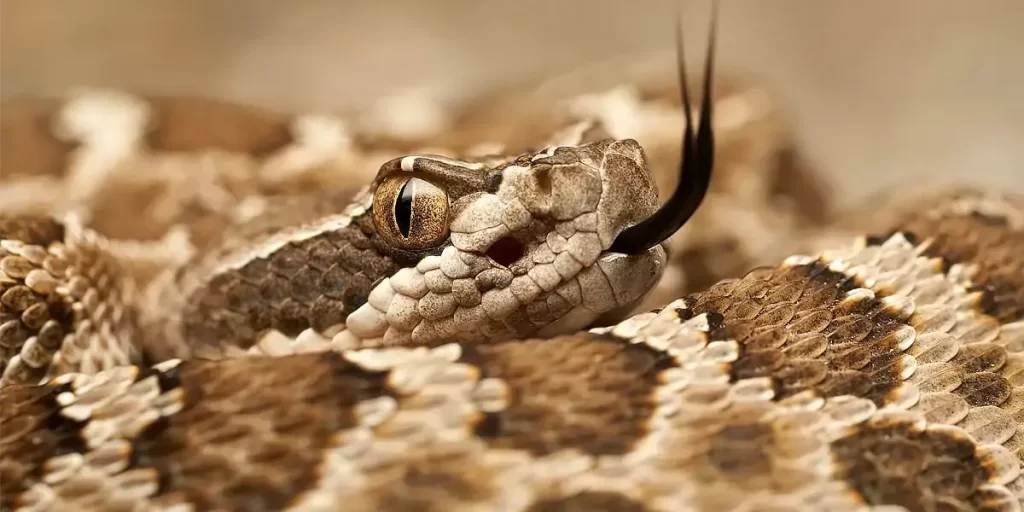
3. Western Diamondback Rattlesnake (Crotalus atrox)
The Western Diamondback Rattlesnake is a well-known venomous snake with a distinctive diamond-shaped pattern on its back. Its most recognizable feature is the rattle at the end of its tail, which it uses as a warning signal.
Eye Size: The Western Diamondback Rattlesnake possesses relatively large eyes, with a diameter of approximately 0.5 centimeters.
Natural Habitat: These rattlesnakes are commonly found in arid and semi-arid regions, including deserts, grasslands, and scrublands.
Geographic Range: Their range extends across North America, from the southwestern United States to parts of Mexico.
Appetite: Western Diamondback Rattlesnakes are carnivorous and primarily feed on small mammals, birds, and occasionally other reptiles.
Natural Predators: Adult rattlesnakes have relatively few natural predators, with larger birds of prey and some mammals posing the main threat.
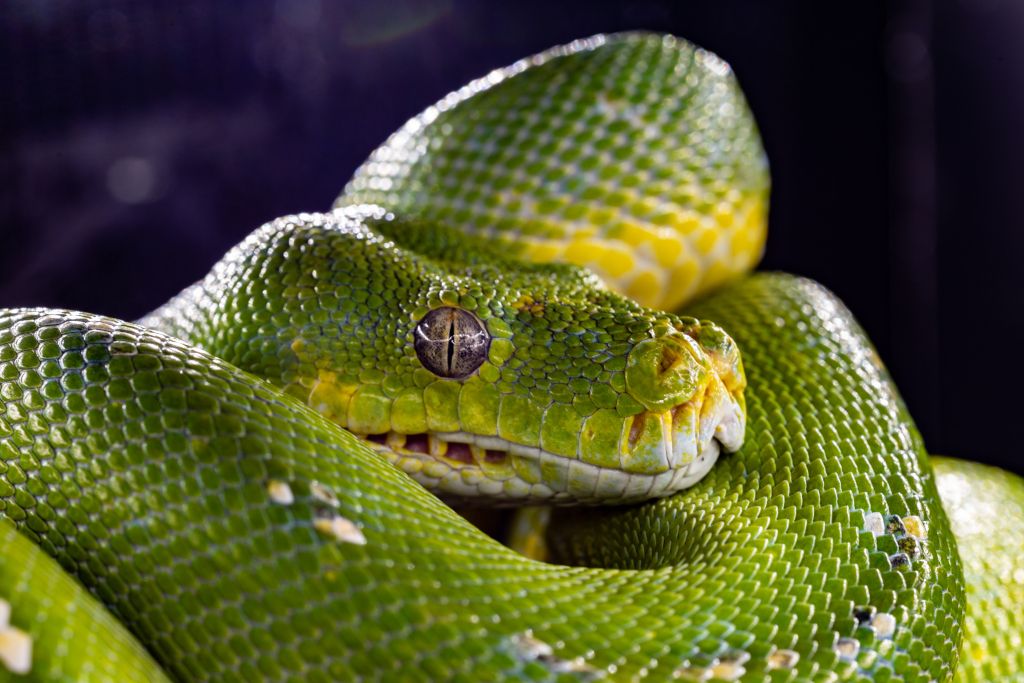
Green Tree Python (Morelia viridis)
The Green Tree Python showcases brilliant green scales and a distinctive head shape. It possesses a prehensile tail, which aids in gripping tree branches as it navigates its arboreal habitat.
Eye Size: Green Tree Pythons have relatively large eyes, measuring about 1 centimeter in diameter.
Natural Habitat: These snakes are arboreal and inhabit the treetops of rainforests in New Guinea and northern Australia.
Geographic Range: Their range encompasses the rainforest regions of New Guinea and nearby islands, as well as northern Australia.
Appetite: Green Tree Pythons primarily feed on birds, using their striking coloration and large eyes for effective ambush hunting.
Natural Predators: Young snakes are vulnerable to predation by various birds and tree-dwelling mammals.
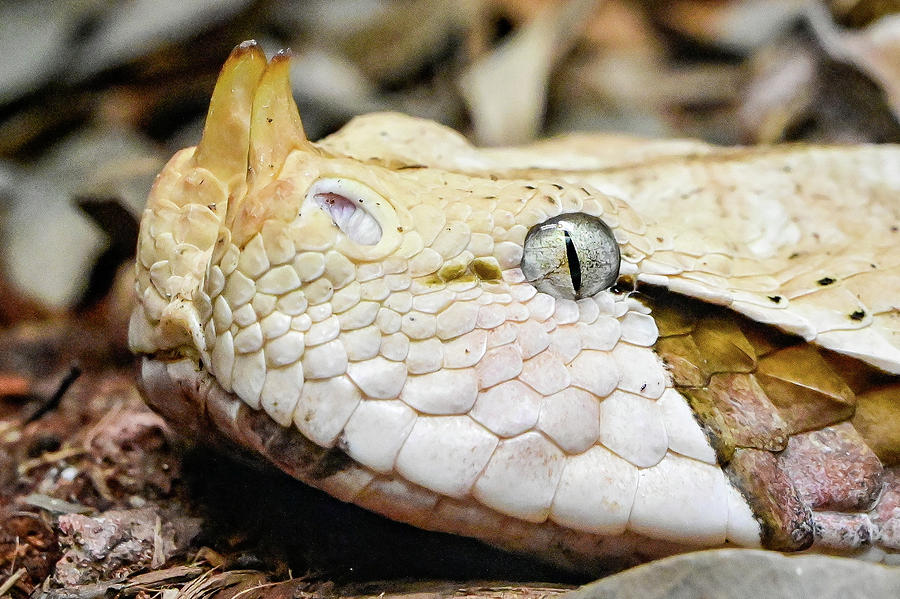
Gaboon Viper (Bitis gabonica)
The Gaboon Viper is a master of camouflage, boasting a coloration that mimics the forest floor. It possesses one of the largest sets of fangs among snakes, hidden within its massive head.
Eye Size: The Gaboon Viper, a master of camouflage, has relatively large eyes, measuring approximately 1 centimeter in diameter.
Natural Habitat: These vipers are found in the dense rainforests and swampy areas of sub-Saharan Africa.
Geographic Range: Gaboon Vipers are distributed across a range that includes West and Central Africa.
Appetite: They primarily feed on small mammals, birds, and sometimes amphibians, relying on their venomous fangs for hunting.
Natural Predators: Gaboon Vipers have few natural predators, with large birds of prey and some carnivorous mammals being potential threats.
Conclusion: These snakes’ striking eyes, combined with their unique features and environments, showcase the marvels of nature’s design. They are not only predators but also symbols of the beauty and complexity found within the animal kingdom.

